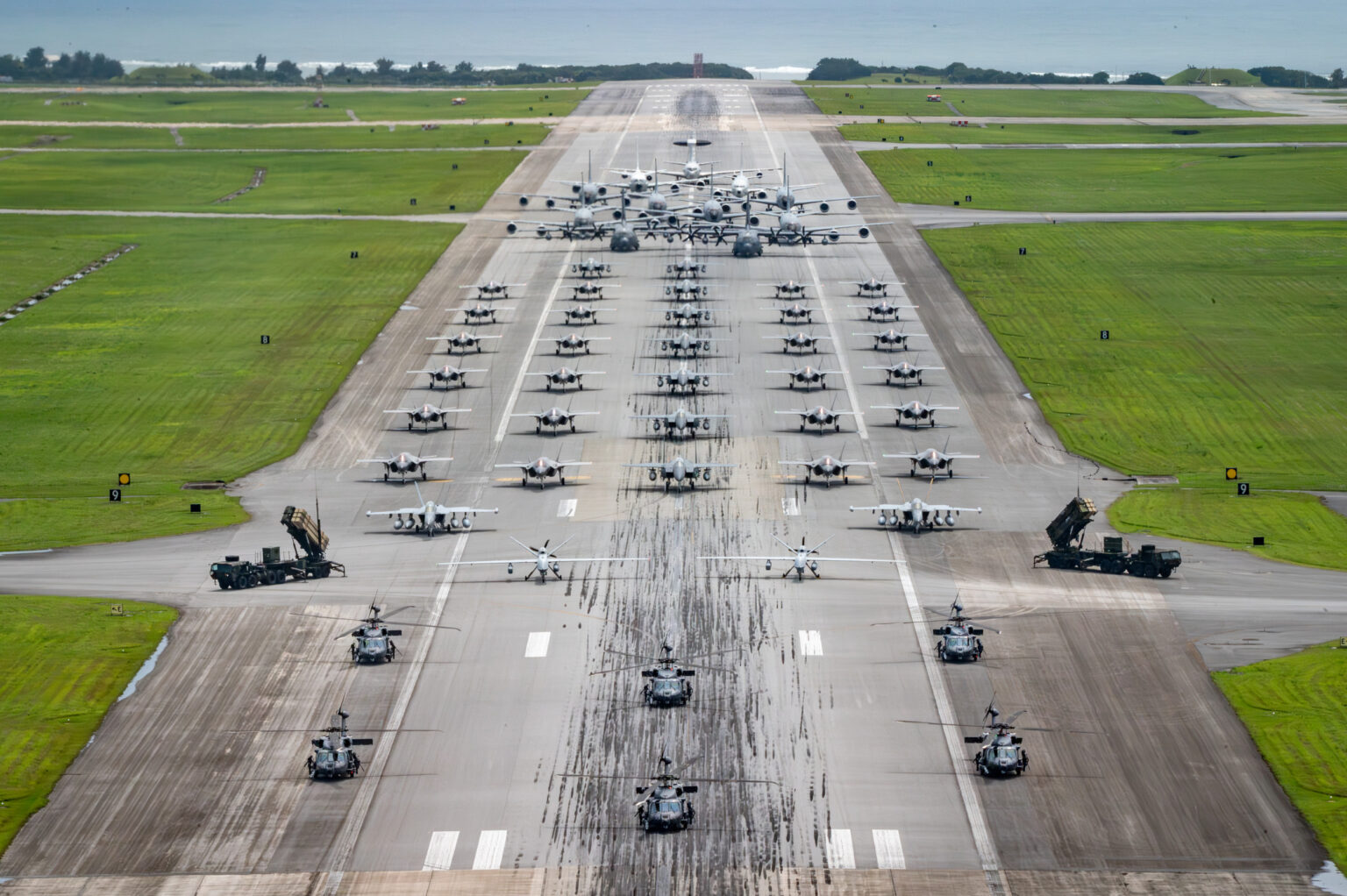The United States has staged a show of force with over 50 military aircraft and a pair of missile launchers at Kadena Air Base in Japan, its frontline outpost in the Western Pacific Ocean.
Why It Matters
Kadena Air Base is located on the island of Okinawa in the southwestern waters of Japan. The American military hub is about 370 miles away from Taiwan, making it the closest U.S. air base to the self-governed island. China has claimed sovereignty over Taiwan, threatening to use force against the U.S. security partner.
The U.S. Air Force is currently upgrading its permanent fighter jet presence at Kadena, which will see the replacement of F-15C/D aircraft with more advanced F-15EX jets. The base will maintain a rotational presence of fighter aircraft during this transition period.
What To Know
The U.S. Air Force 18th Wing, the host unit for Kadena, assembled what it called “one of the most diverse formations” of U.S. military aircraft in the Indo-Pacific region on Tuesday, showing combat readiness and regional deterrence, the unit said in a press release.
The majority of aircraft in the formation were from the Air Force, including 24 F-35A stealth fighter jets, eight F-15E fighter aircraft, six HH-60 helicopters, six KC-135 aerial refueling tanker aircraft, two MQ-9 drones, two MC-130J combat transport and special operations tanker aircraft, one RC-135 spy plane, and one E-3G early warning and control aircraft.
Both the F-35A and F-15E jets were recently sent to Okinawa from their home bases in the U.S., forming the latest fighter aircraft rotation. The former were deployed from Alaska and Utah in two squadrons, while the latter was originally based in North Carolina.
A pair of EA-18G electronic warfare aircraft and a P-8 maritime patrol aircraft from the U.S. Navy, as well as two U.S. Army MIM-104 surface-to-air missile launchers, commonly known as the Patriot, also took part in the event, which is known as an “elephant walk.”
“Elephant walk” is a term for a close formation of aircraft taxiing en masse before takeoff, which tests the ability to generate as many sorties as possible in a minimal amount of time.
In January, Kadena also conducted an “elephant walk” with at least nine KC-135 aerial refueling tanker aircraft, highlighting their strategic capabilities, the 18th Wing said.
U.S. Air Force Brigadier General Nicholas Evans, commander of the 18th Wing, said the base “stands ready to project airpower” to ensure the Indo-Pacific region is free and open.
What People Are Saying
The U.S. Air Force 18th Wing said: “The sheer diversity of capabilities in this exercise is a testament to the lethality Kadena can leverage to deter adversarial aggression in the Indo-Pacific region.”
U.S. Air Force Chief Master Sergeant Brandon Wolfgang of the 18th Wing said: “An elephant walk like this sends a message you can’t ignore—it shows our airmen, allies, and adversaries that we’re united, capable, and ready…This kind of teamwork and presence is exactly how we maintain deterrence in the Indo-Pacific.”
What Happens Next
It remains to be seen whether other U.S. air bases in the Indo-Pacific will conduct “elephant walks” to demonstrate America’s air power in the contested region.
Read the full article here

